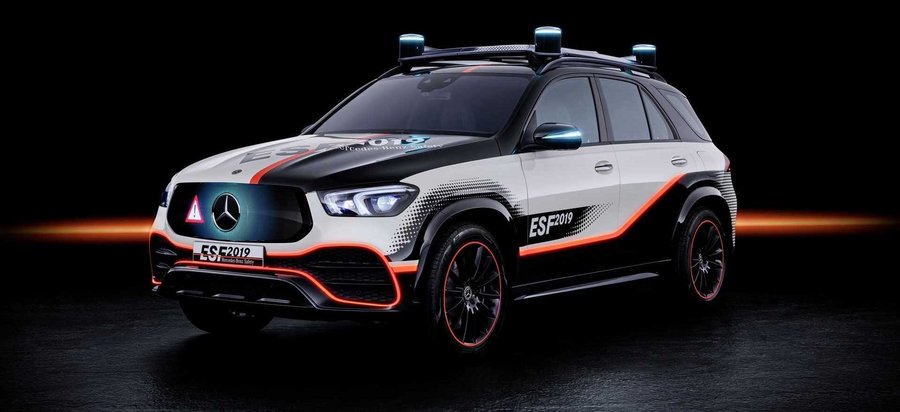Mercedes Debuts Semi-Autonomous Experimental Safety Vehicle

Continuing a decades-long tradition, Mercedes-Benz has just unveiled its latest Experimental Safety Vehicle. It's a concept shining more light on the safety ideas the automaker's experts, researchers, and engineers are currently working on. While some of these features are almost ready for production release, others "look well into the future."
Based on the latest Mercedes-Benz GLE, the ESV uses a plug-in hybrid powertrain and is capable of automated driving in several different situations. The Germans will display the research vehicle at the ESV convention in Eindhoven in June this year, which will be followed by a public premiere at the Frankfurt Motor Show in September 2019. The manufacturer says the concept is a preview of "what is to come," as well as "a vision" and "a contribution to the general discussion" about safety in modern vehicles.
Some of ESV's main safety features are related to its semi-autonomous functions. For example, when the plug-in SUV runs in automated mode, the steering wheel and pedals retract to reduce the risk of injury in the case of a crash. This requires new mounting locations for the seatbelts and airbags, which are now integrated into the seats and dashboard, respectively. Another example is the cooperative communication system, which informs other road users about potential hazards on the road ahead.
In terms of occupants' safety, Mercedes is introducing its Pre-Safe Child technology which uses a preventively tensioned belt and side-mounted impact protection elements to reduce the loads acting on the child during a crash. The system also monitors the seat installation and the child's vital signs.
Another very interesting feature takes the shape of a small robot that automatically emerges from the vehicle's rear following an accident, and acts as a warning triangle. Additional signalization comes from a warning triangle that folds out of the vehicle's roof, as well as rear windows that act as communication surfaces.
"Safety is part of the brand DNA of Mercedes-Benz," Ola Kallenius, Member of the Daimler AG Executive Board responsible for Mercedes-Benz Cars Development, comments. "We have repeatedly demonstrated that we are not short of ideas in this field since the 1970s, with our Experimental Safety Vehicles. The new ESF 2019 reflects the mobility of the future, and presents a wide variety of innovations which we are currently researching and developing. And I can already say this much: some of the functions are very close to series production."
